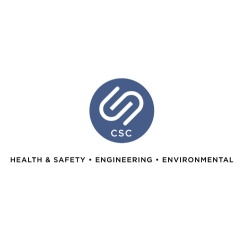Preventing Occupational Exposure Risks to Phosgene and Other Industrial Chemicals
Clark Seif Clark provides industrial hygiene testing, consulting and training services to identify and mitigate a wide range of chemical, radiological and biological exposure hazards.
Due to occupational exposure risks, the Occupational Safety and Health Administration (OSHA) has set a Permissible Exposure Limit (PEL) for phosgene and NIOSH has a Recommended Exposure Limit (REL).
Phosgene (COCl₂) is described by the Agency for Toxic Substances & Disease Registry (ATSDR) as a colorless gas that has the odor of freshly cut hay. It is a manufactured chemical and as a gas at room temperature (70º F) is heavier than air. Phosgene is also sometimes stored as a liquid under pressure or refrigeration.
ATSDR reports it is used in the manufacture of other chemicals such as dyestuffs, isocyanates, polycarbonates and acid chlorides. Phosgene is also used in the manufacture of pesticides and pharmaceuticals, and can be used to separate ores. In World War 1 it was used as a chemical weapon with the military designation CG.
For workers in industries that use phosgene, the National Institute for Occupational Safety and Health (NIOSH) states they may be harmed from exposure. It is known to cause irritation of the eyes, dry burning throat, vomiting, cough, foamy sputum, breathing difficulty and chest pain. As a liquid it can cause frostbite. The Centers for Disease Control and Prevention (CDC) reports that exposure to phosgene may also cause delayed effects that may not be apparent for up to 48 hours.
Examples of workers NIOSH proclaims may be at risk of being exposed include:
- Workers in plants where dyes are manufactured
- Manufacturing workers who use it in the production of polymers
- Workers who use it to make pesticides
- Pharmaceutical manufacturing workers in production plants
- Workers who use it to separate ores
- Welders who use it to clean with chlorinated solvents
“Due to occupational exposure risks, the Occupational Safety and Health Administration (OSHA) has set a Permissible Exposure Limit (PEL) for phosgene and NIOSH has a Recommended Exposure Limit (REL),” said Zahid Iqbal, MPH, CIH and Technical Director at Clark Seif Clark (CSC). “This is why the industrial hygiene and environmental professionals at Clark Seif Clark offer testing, monitoring, consulting and training services to identify and mitigate risks associated with phosgene and many other hazards. These services not only help to safeguard workers, they are also instrumental for keeping companies in regulatory compliance.”
CSC has sponsored an educational video about phosgene exposure risks that can be seen at: https://youtu.be/KYFEskM01_4
To learn more about this or other industrial hygiene, indoor air quality, environmental, health and safety services, please visit www.csceng.com, email csc@csceng.com or call (800) 807-1118.
About Clark Seif Clark
CSC was established in 1989 to help clients in both public and private sectors address indoor air quality, occupational, environmental, and health and safety (EH&S) issues. CSC is a leading provider of these services with multiple offices along the western seaboard and southwest. The company believes in science-based protocols and has a strong background in engineering, making them the preferred environmental consultants to industrial clients, healthcare facilities, architects, schools, builders, contractors, developers and real estate professionals.
( Press Release Image: https://photos.webwire.com/prmedia/12710/279863/279863-1.jpg )
WebWireID279863
- Contact Information
- Paul Cochrane
- President
- Cochrane & Associates, LLC
- Contact via E-mail
This news content may be integrated into any legitimate news gathering and publishing effort. Linking is permitted.
News Release Distribution and Press Release Distribution Services Provided by WebWire.

